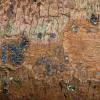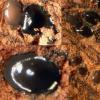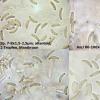
28-10-2025 22:22
 Bernard Declercq
Bernard Declercq
Hello.I'm searching for the following paper:Punith

28-10-2025 22:03
 Bernard Declercq
Bernard Declercq
Hello.I'm searching for the following paper:Punith

28-10-2025 19:33
 Nicolas Suberbielle
Nicolas Suberbielle
Bonjour à tous,Je voudrais votre avis sur cette r

28-10-2025 15:37
Carl FarmerI'd be grateful for any suggestions for this strik

28-10-2025 11:29
 Tanja Böhning
Tanja Böhning
Hello, I found this very small (ca 0,5mm) yellow

27-10-2025 00:34
 Francois Guay
Francois Guay
I found this strange species in Québec,Canada, gr

27-10-2025 15:29
 Michel Hairaud
Michel Hairaud
Bonjour à tous, Avec Elisabeth Stöckli nous avo

26-10-2025 13:39
Joaquin MartinHi,I found this fungus in a mixed forest of spruce
Eutypa? Cryptosphaeria?
Björn Wergen,
17-01-2011 13:25
 Hello,
Hello,I have collected a Diatrypaceae on ?Prunus spinosa, perhaps the substrate is wrong and you can help me with determining this, I am at least not really sure with determining Crataegus and Prunus in winter :D
well, here are some features of this species:
Fruitbody consisting of single or a bit clustered perithecia completely embedded in the cortex, 0,2-0,3 mm, first withish-greyish, then black, with a rudimentary ostiolus (not easy to see), after cutting with black lines around the fruitbody (rudimentary stroma?).
Spores 7-8x1,5-2,5 µm, allantoid, pale brownish, with 2 little vakuoles in the endings, smooth. Asci 80-100x4-5 µm, long stalked with clustered spores in the middle, with 8 spores (biseriate), IKI-, Paraphyses hyaline, with a few vakuoles, inconsiderable.
It seems as if the asci collapse at maturity (?).
Can someone help me with this? Or at least with literature to determine diatrypaceae? I have always problems with this ;)
regards,
Kazuya
Jacques Fournier,
18-01-2011 18:11

Re:Eutypa? Cryptosphaeria?
Hi Kazuya,
I think you are indeed dealing with a Diatrypaceae on Prunus spinosa. The rectangular pattern of cracking of the bark seems typical.
On this host Eutypa lata is very frequent but not much typical because it forms small stromata as on your photo, leaving the periderm intact. Two key features of this species are the nearly smooth, non sulcate ostioles, and IKI+ apical ring. This structure is very small and the bluing rather faint, you have to observe it on a very thin slide. You can use either IKI or Melzer's reagent after pretreatment with 3% KOH to stain the apical ring of Diatrypaceae, but I prefer the second method which involves a retraction of the protoplasm in the ascus and makes the minute ring more conspicuous.
Identifying Diatrypaceae is a hard job, not much rewarding until you have some practice. The only comprehensive taxonomic treatment is that of Rappaz 1987. I think you can find a pdf version on Ascomyceteorg.
Good luck!
Jacques
I think you are indeed dealing with a Diatrypaceae on Prunus spinosa. The rectangular pattern of cracking of the bark seems typical.
On this host Eutypa lata is very frequent but not much typical because it forms small stromata as on your photo, leaving the periderm intact. Two key features of this species are the nearly smooth, non sulcate ostioles, and IKI+ apical ring. This structure is very small and the bluing rather faint, you have to observe it on a very thin slide. You can use either IKI or Melzer's reagent after pretreatment with 3% KOH to stain the apical ring of Diatrypaceae, but I prefer the second method which involves a retraction of the protoplasm in the ascus and makes the minute ring more conspicuous.
Identifying Diatrypaceae is a hard job, not much rewarding until you have some practice. The only comprehensive taxonomic treatment is that of Rappaz 1987. I think you can find a pdf version on Ascomyceteorg.
Good luck!
Jacques
Björn Wergen,
19-01-2011 01:15

Re:Eutypa? Cryptosphaeria?
Hm many thanks jacques, I've already visited the site, there is also the information about Rappaz 1987 and a link but I'm not allowed to see the page without a password...ascomycete.org is new, right? I didn't hear about it before :D
regards,
Kazuya
regards,
Kazuya
Björn Wergen,
19-01-2011 20:50

Re:Eutypa? Cryptosphaeria?
Hey! What about Cryptovalsa protracta?? But with more than 8 spores...:(
Jacques Fournier,
19-01-2011 22:19

Re:Eutypa? Cryptosphaeria?
Cryptovalsa protracta has 32-spored asci, larger spores and the stroma, although higly variable, usually is Eutypella-like, pustulate to pulvinate. It cannot be confused with E. lata!
No idea about your Dothideomycete, you should look into the structure of the "stroma". Try to make a thin section and take a photo under the microscope.
Good evening!
Jacques
No idea about your Dothideomycete, you should look into the structure of the "stroma". Try to make a thin section and take a photo under the microscope.
Good evening!
Jacques



